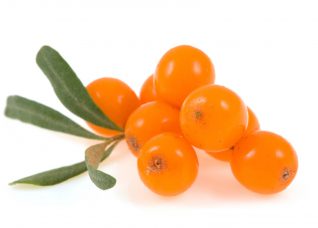
MinerAlert

MinerAlert
Hippophae rhamnoides
Elaeagnaceae
Sha Ji, cu liu guo, sallow thorn, sand thorn, star-bu, ameel. amesh, Tsarap, tapu, taru, chumaa.

This thorny shrub is native to China, India, and Himalaya.
Seed, bark, leaves, fruit, and oil.
The fruits are very sour but edible and syrup can be obtained from them for therapeutic purposes. The bark or the fruit paste is applied topically. A bark decoction is taken as tea Quattrocchi, 2012).
The fruit is very acidic and is valued for its astringent and anti-hemorrhagic (against bleeding) properties. Syrup made from the fruit is taken internally for lung problems, tuberculosis, against coughs and colds. A decoction for the fruit is taken to treat skin eruptions. The fruit paste is applied to wounds to stop bleeding. A concentrated juice decoction is applied on the neck to treat influenza and coughs. A paste made from the bark or fruit is applied to the pelvis or joints against pain. The paste made from the bark is applied topically to treat ulcers and wounds. A bark decoction is ingested to “purify the blood”. The oil extracted from the plant is used topically for skin diseases, eczema, burns and wounds. The fruit juice has shown anticancer effects in laboratory experiments using cells and animals (Li et al., 2015; Quattrocchi, 2012; Tang and Eisenbrand, 2011). The fruit has an appreciable content of vitamin C, more so than various citrus fruits (Mabberley, 2008). One of the plant’s main constituents, known as Isorhamnetin, has powerful antioxidant effects (free radical scavenger) that may also have anticancer effects (Li et al., 2015).
Zhamanbaeva et al (2015) studied the effects of ethanol (alcohol) extract obtained from the leaves of sea buckthorn on the growth and differentiation of human acute myeloid leukemia cells. The results of the study showed that the leaf extract inhibited cancer cell proliferation.
Sea buckthorn berries have been shown to have powerful protective effects on the liver of chickens exposed to the potent natural carcinogens (aflatoxins) produced by certain species of microscopic fungi (Solcan et al., 2013).
Sea buckthorn improves the body’s resistance to infection, as well as treats skin eruptions and irritation. Additionally, the plant’s active antioxidant ingredients are useful for the treatment of heart disease. The oil from the fruit has both cosmetic as well as medicinal uses, since it can relieve cardiac problems such as angina, and also lower blood cholesterol levels (Tang and Eisenbrand, 2011; Li, 2009).
Khare (2009) mentions that In India, the fruit is used to treat diarrhea, to improve digestion, against coughs and to treat hemorrhages. Preparations made from the plant are used to treat gastrointestinal ulcers. Externally poultices made from the plant are used to treat burns, bedsores, and skin complications caused by exposure to X-rays. The fruits (berries) are nutritious since they are a source of various vitamins and other natural compounds, which help people, adapt to cold, long winter conditions. The plant possesses antioxidant activities and the leaves contain flavonoids.
Some of Sea buckthorn’s active ingredients, such as flavones, have been considered as potential ingredients for functional foods due to their beneficial health effects, including treating cardiovascular disease, lowering plasma cholesterol levels, and regulating the immune system’s functions (Wang et al., 2016).
Safety/Precautions:
Before you decide to take any medicinal herb or herbal supplement, be sure to consult with your health care professional first. Avoid self-diagnosis and self-medication: Always be on the safe side!